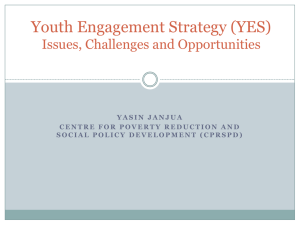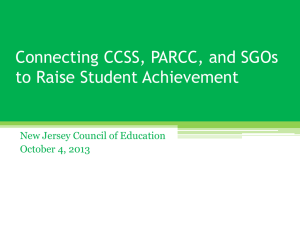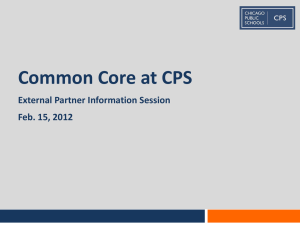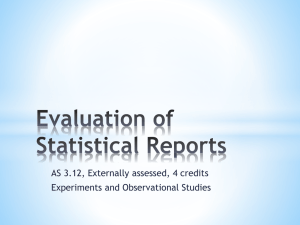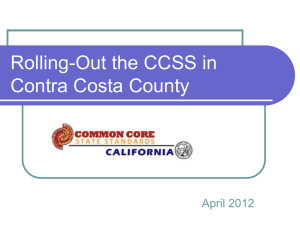Informal Observational Tool
advertisement
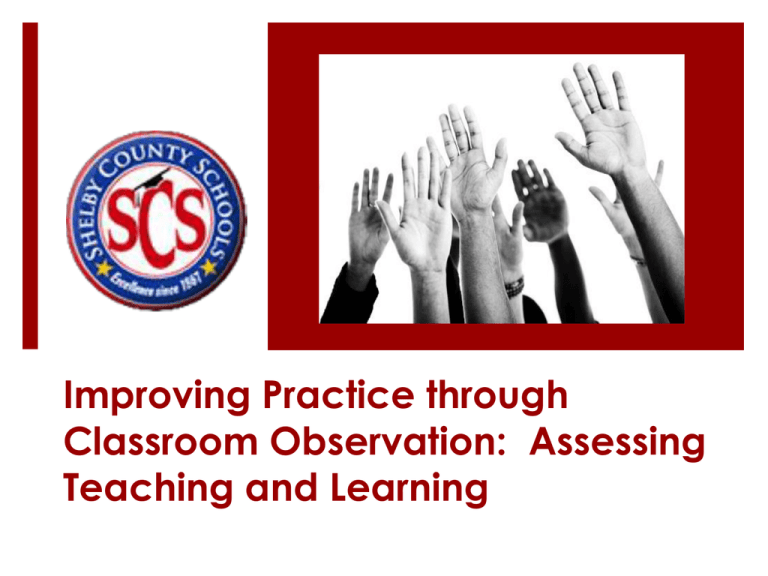
Improving Practice through Classroom Observation: Assessing Teaching and Learning GOAL: Writing 4-12* To ensure that all students in grades 4-12 acquire the foundational skills needed for them to be proficient writers at the end of each grade level. *While this is a presentation designed for middle and high school grade levels, it is also suitable for students in grades 4 and 5. Today’s Objectives 1. To recognize the 3 Instructional Shifts of Common Core 2. To practice using the “Look Fors” 3. To practice giving quality feedback based on observations and “Look Fors” Agenda • 3 Shifts of Common Core: ELA • 3 shifts of Common Core: Math • Look Fors: ELA • Look Fors: Math • Informal Observational Tool: ELA Video Practice • Choosing Complex Text • TNCore Text Complexity Form Review of Instructional Shifts 1. Building knowledge through contentrich nonfiction 2. Reading, writing, and speaking grounded in evidence from text, both literary and informational 3. Regular practice with complex text and its academic language Transitioning to Common Core requires specific instructional shifts with action: Shift One: Develop Content Knowledge • Support deep content understanding from deliberate analytical reading • Develop strategies for reading content Shift Two: Reading • Use annotations while reading & Writing with • Distinguish important vs. interesting WHILE reading Evidence Shift Three: • Develop strategies for reading fluently and using metacognitive skills Regular practice with complex text • Engage in practice reading rigorous texts CCSS Math Instructional Shifts 1. Focus strongly where the Standards focus 2. Coherence: think across grades, and link to major work of the grades with equal intensity. 3. Rigor: in major work of the grade pursue: conceptual understanding, procedural skill and fluency application CCSS Math Instructional Shifts – RIGOR Conceptual Understanding: 3.NF.1 Understand a fraction 1/b as the quantity formed by 1 part when a whole is partitioned into b equal parts; understand a fraction a/b as the quantity formed by a parts of size 1/b. Procedural Skill and Fluency: 5.NBT.5 Fluently multiply multi-digit whole numbers using the standard algorithm. Application: 7.NS.3 Solve real-world and mathematical problems involving the four operations with rational numbers. Turn and Talk LOOK FORS: What do you look for when you observe a 6-12 English / Language Arts or Math classroom? What tools/information do you have? What tools/information do you need? Purpose of the Walkthrough Tool To provide concrete examples of what the CCSS looks like in 6-12 classrooms (ELA and Math) Key points Not all components will be observable during a brief walkthrough Not designed for formal evaluation What to look for in a Mathematics Classroom What to look for in an English / Language Arts Classroom Informal Observational Tool From Achieve the Core (for ELA) A two-page Power Point Can be “saved as” Can be filled-out quickly Can be emailed to teacher being observed before you leave their classroom. Immediate feedback for teacher Informal Observational Tool PRACTICE TIME Watch the following video and practice using the Informal Observational Tool. VIDEO: https://www.teachingchannel.org/videos/teachin g-about-textual-evidence Informal Observational Tool Turn and talk with your elbow partner. Compare your video observations using the Informal Observational Tool. Informal Observational Tool List some advantages for using a tool such as the IOT: Text Complexity Be aware of the grade levels: at 6-12, complex text does not meet the lexiles of yesteryear. Sources for complex text, in addition to the core reading program: http://achievethecore.org/dashboard/300/search/6/1/9/1 0/11/12/page/812/search-for-lessons-to-use-with-popularstories-secondary-list-pg https://newsela.com/articles/?category=war-and-peace http://tntel.tnsos.org (TN Electronic Library) http://scsliteracy.weebly.com./401/login.php?redirect=/ (password: readandwrite) Examining Text Complexity The TNDOE has a series of videos on text complexity. Visit the website below for assistance: http://tncore.org/english_language_arts/cu rricular_resources/text_complexity.aspx Username: tneducation Password: fastestimproving Team Planning How do you plan to gather the data you need from informal observations? Who will conduct informal observations? How often? What instrument(s) will you use? How will you obtain inner-rater reliability? What will you do with the information? Put your plans on large chart paper and be prepared to share. In Conclusion Our goal: To ensure that all students in grades 6-12 acquire the foundational skills needed for them to be proficient writers at the end of each grade level. Our strategy: Equip all 6-12 teachers with the skills they need to deliver effective reading/writing instruction. QUESTIONS ? We hope that today's session has increased your understanding of the 3 shifts of Common Core and how to use the correlating Observational Tool to improve teacher performance. The informal observation idea and the informal observational tool can be incorporated into your Title 1-School Improvement Plan. This two piece process can be used to improve academic programs in your school.

